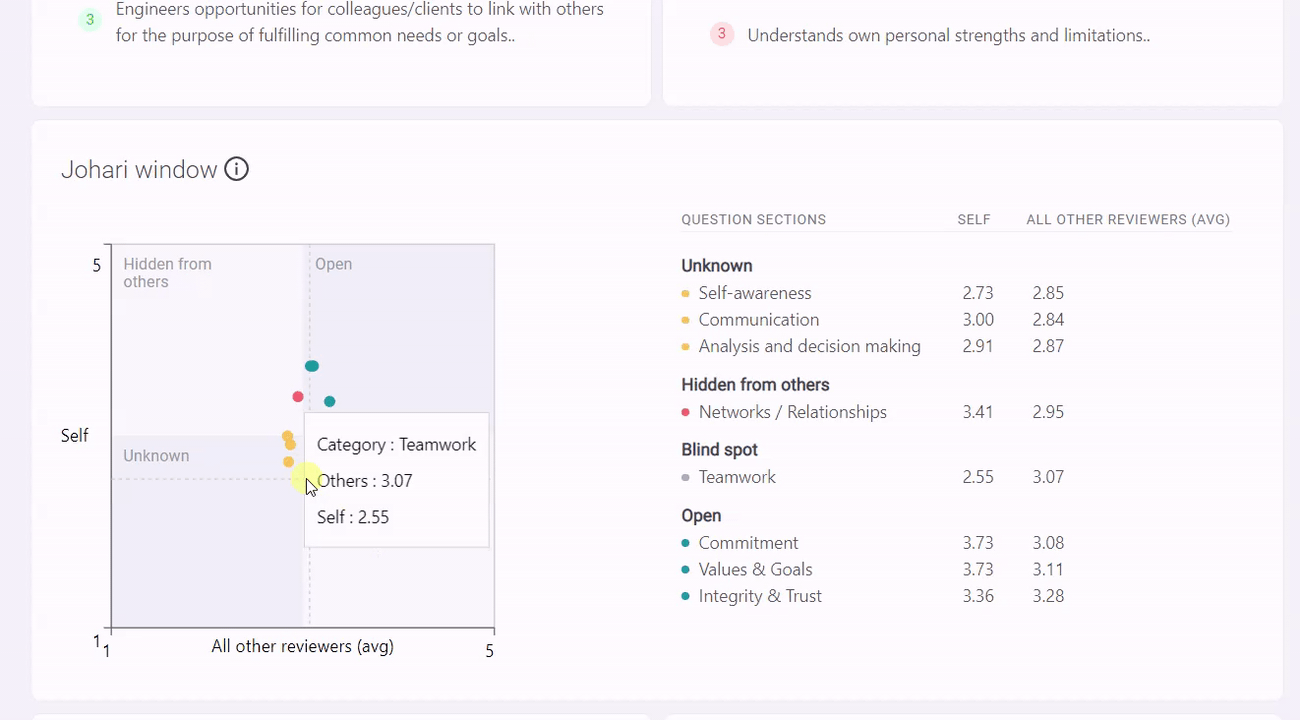The 4 essential quadrants.
Developed in 1955 by Joseph Luft and Harry Ingham, Johari’s Window clarifies the differences in your perception and that of others so you can understand the areas where you can create maximum positive impact at work.

-
Hidden - The top left quadrant is referred to as ‘Hidden’. This includes competencies that you may know about yourself but others aren’t aware of.
-
Open - The top right quadrant is where you and your raters agree on competencies you use with a high degree of mastery consistently.
-
Unknown - The bottom left quadrant is where you and your raters are in agreement on competencies that you do not use consistently or use only at a basic level.
-
Blind spots - The bottom right quadrant represents competencies that others perceive you are strong at but are unaware of.
Application of the Johari’s Window
The primary application of Johari’s Window is to expand your Open area. This can be done by reducing the Blind Spots quadrant through feedback solicitation. By actively seeking feedback in a safe environment, you may reduce blind spots by increasing your self-awareness. You may also increase the Open area by deliberately disclosing areas within your Hidden quadrant. Voluntary disclosure may also result in greater interpersonal relationships derived from deeper understanding and connection. Lastly, the Unknown quadrant may include repressed or subconscious traits. Self-discovery or through observation by others, you may begin to uncover competencies within the unknown quadrant.
For any questions, send an email to our responsive support team at support@engagerocket.co We're here to assist you every step of the way!
